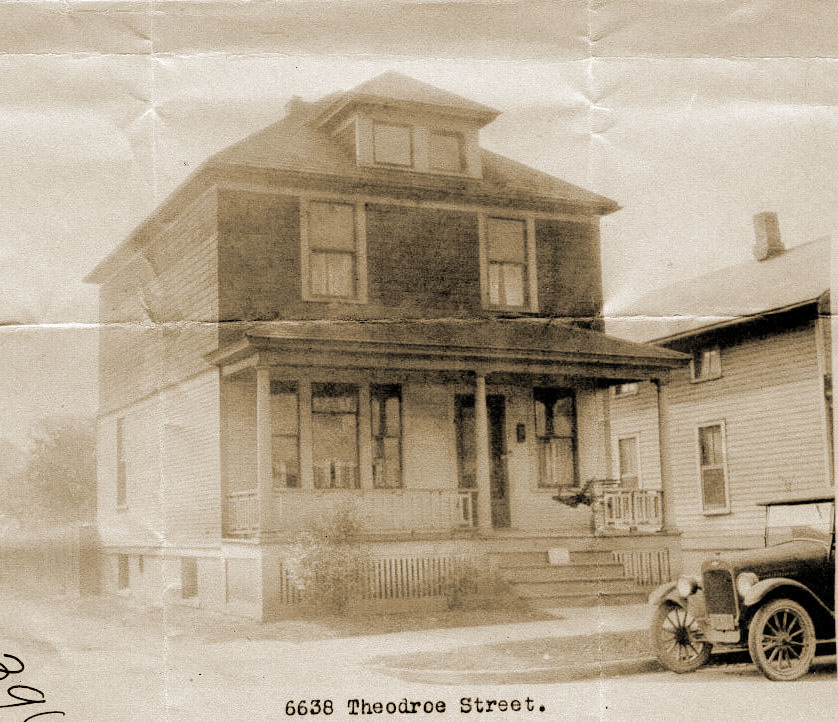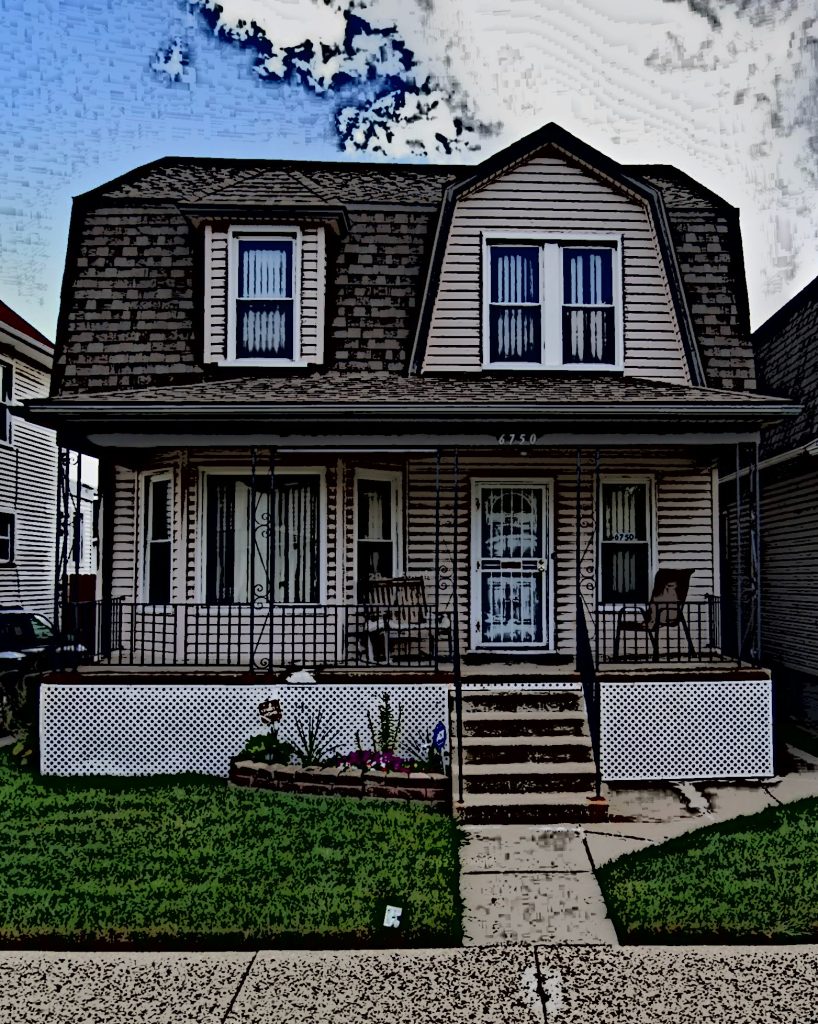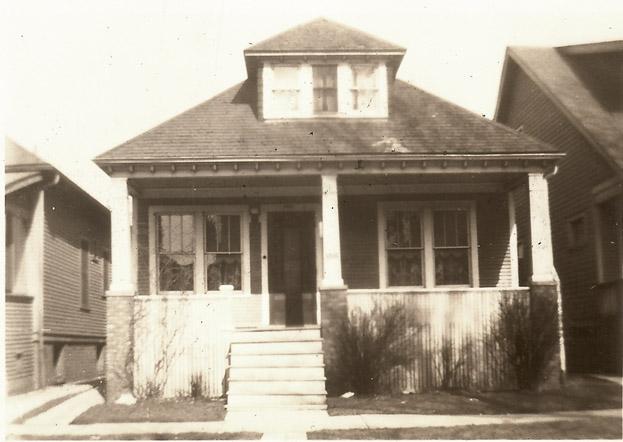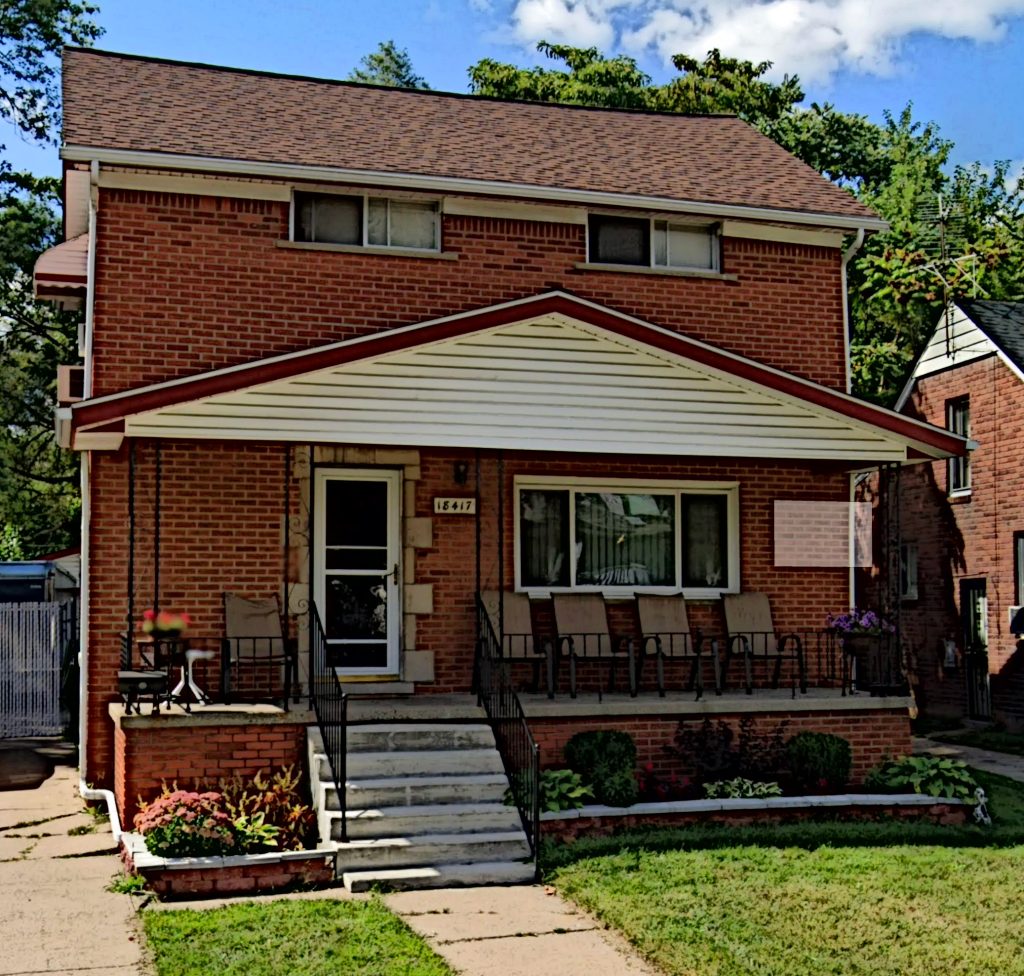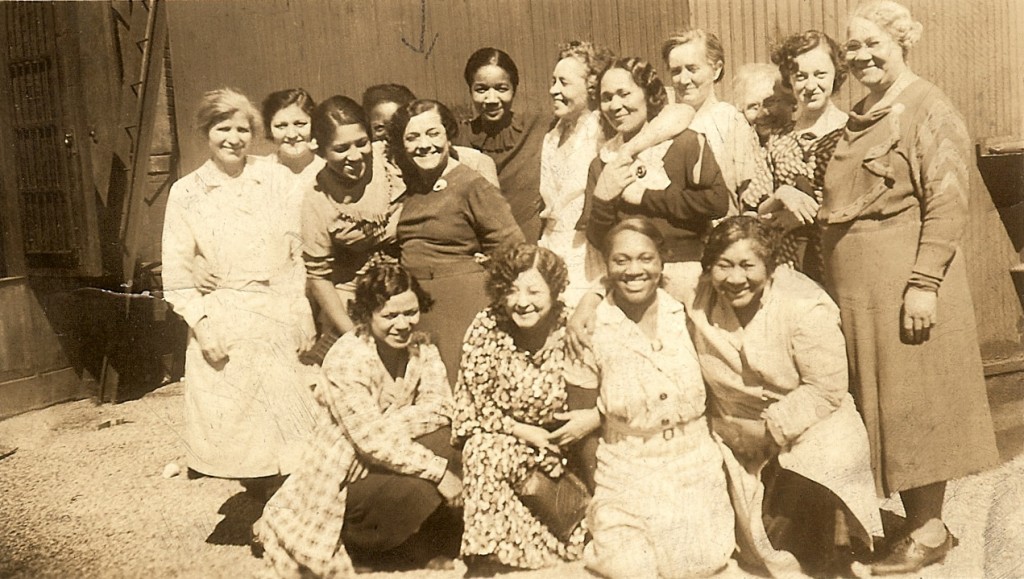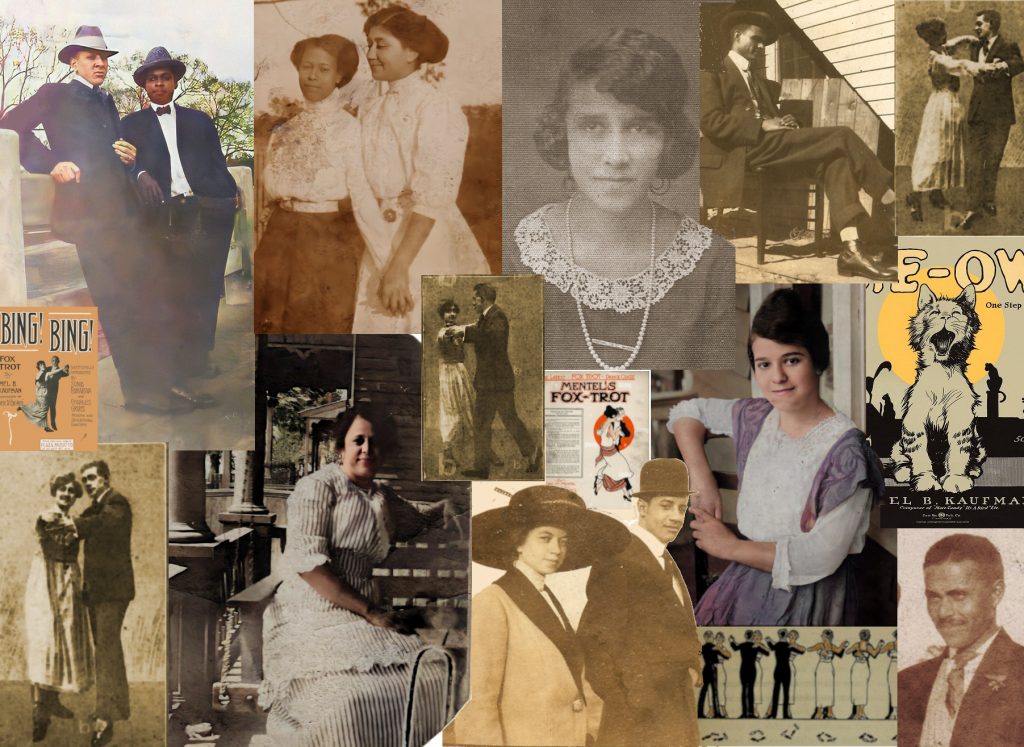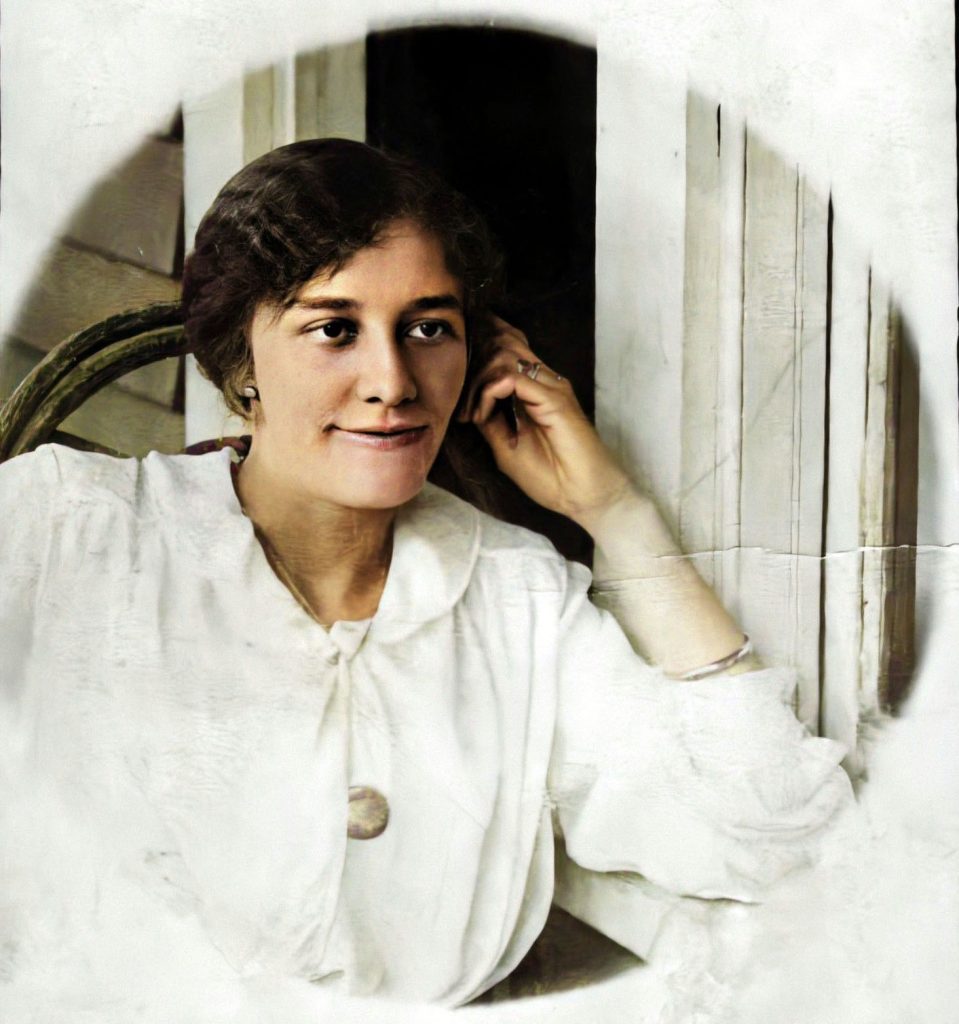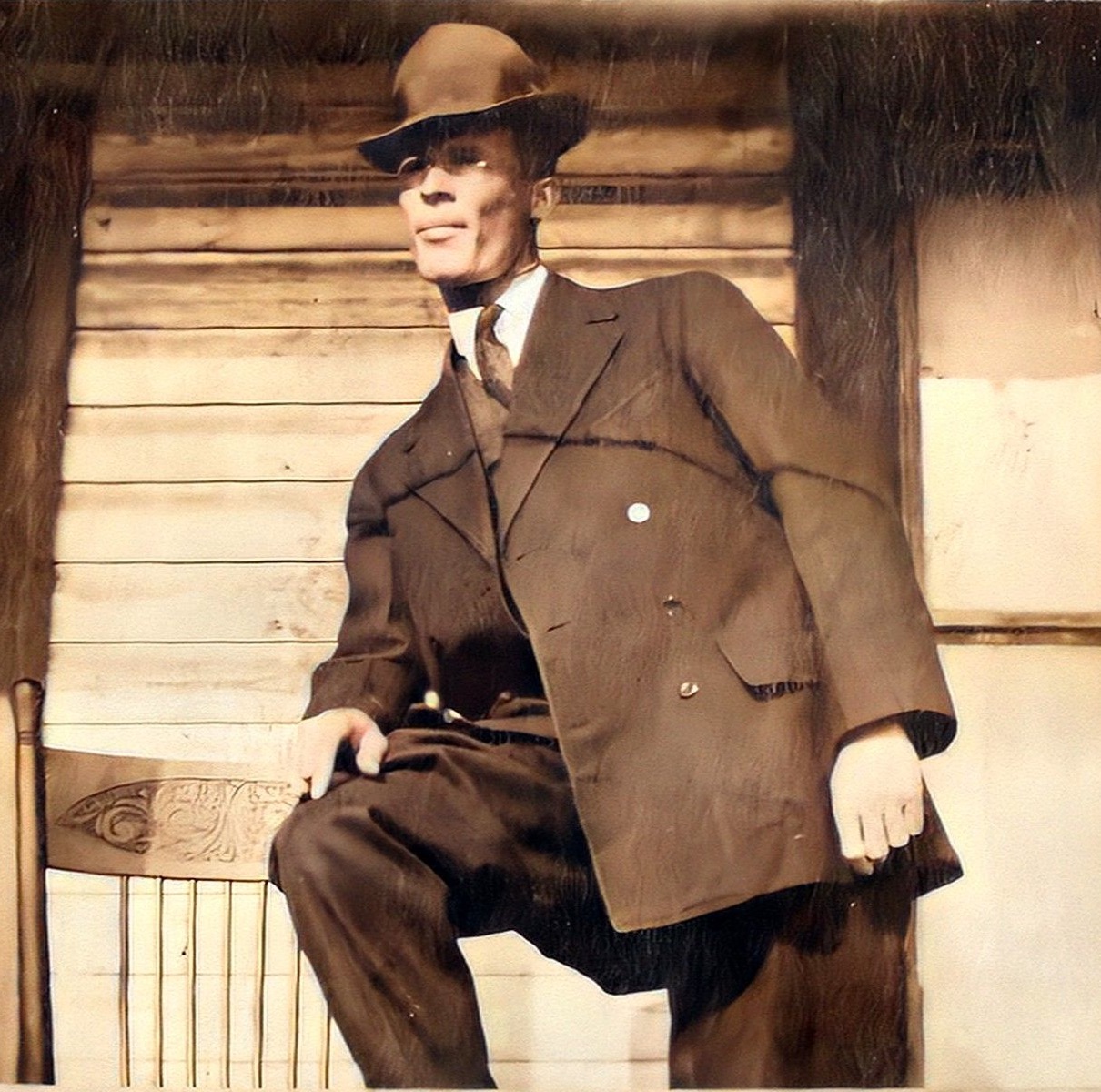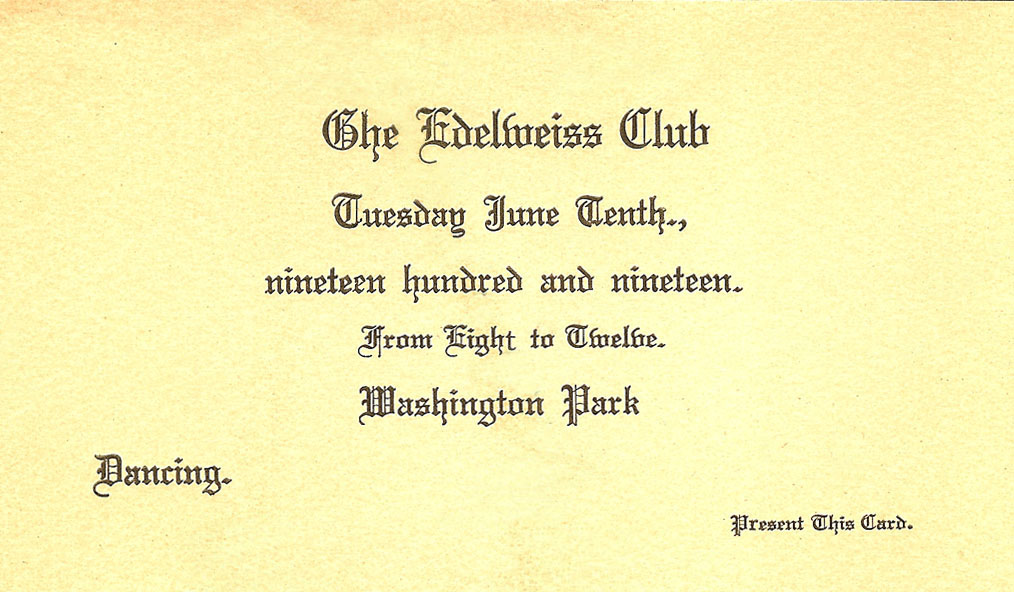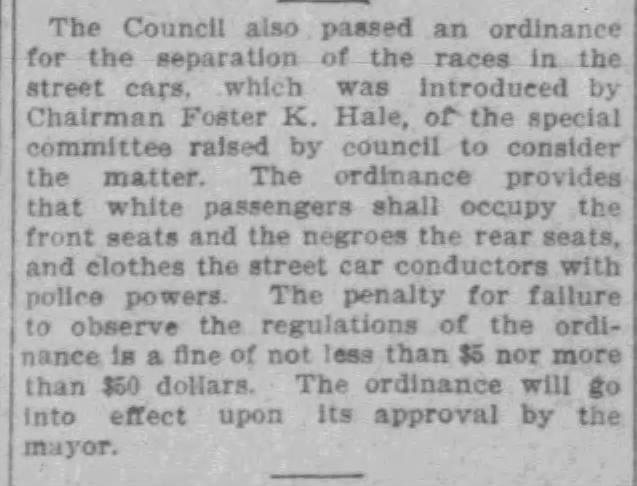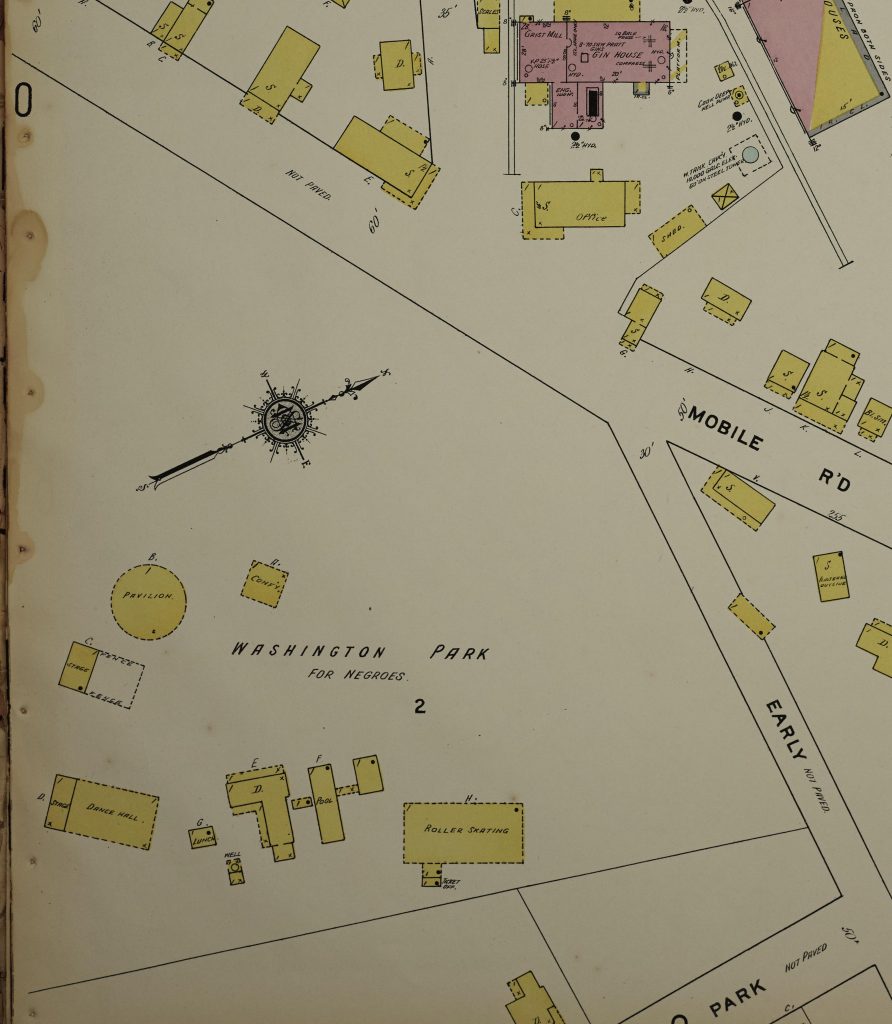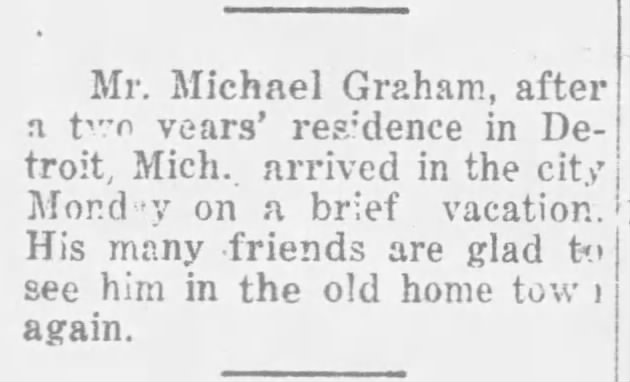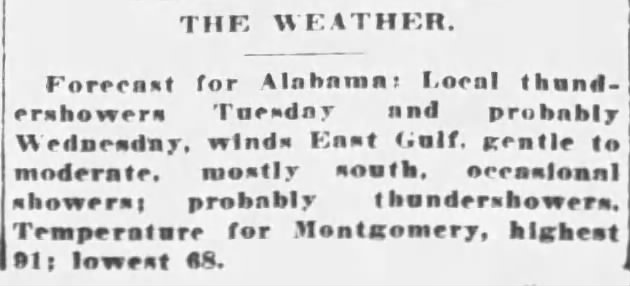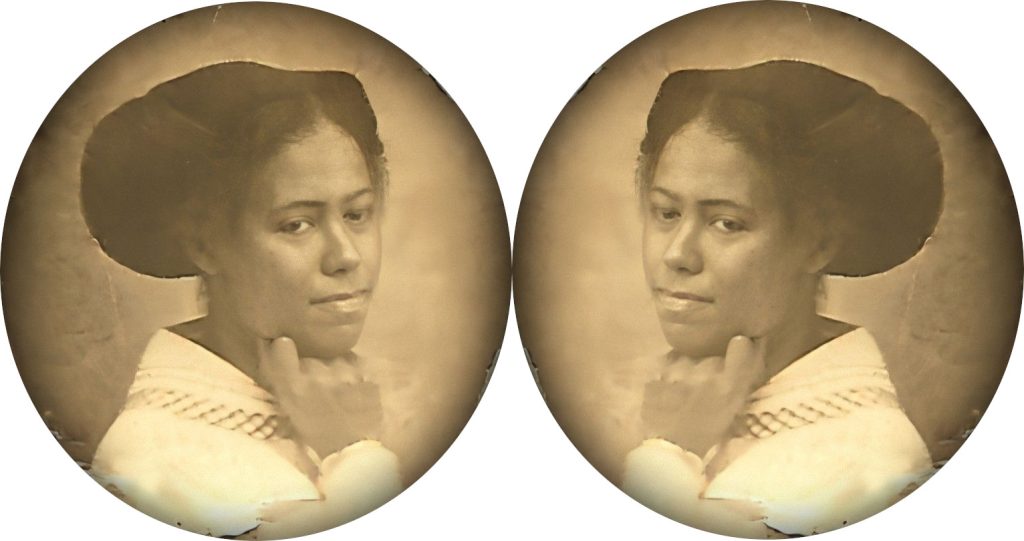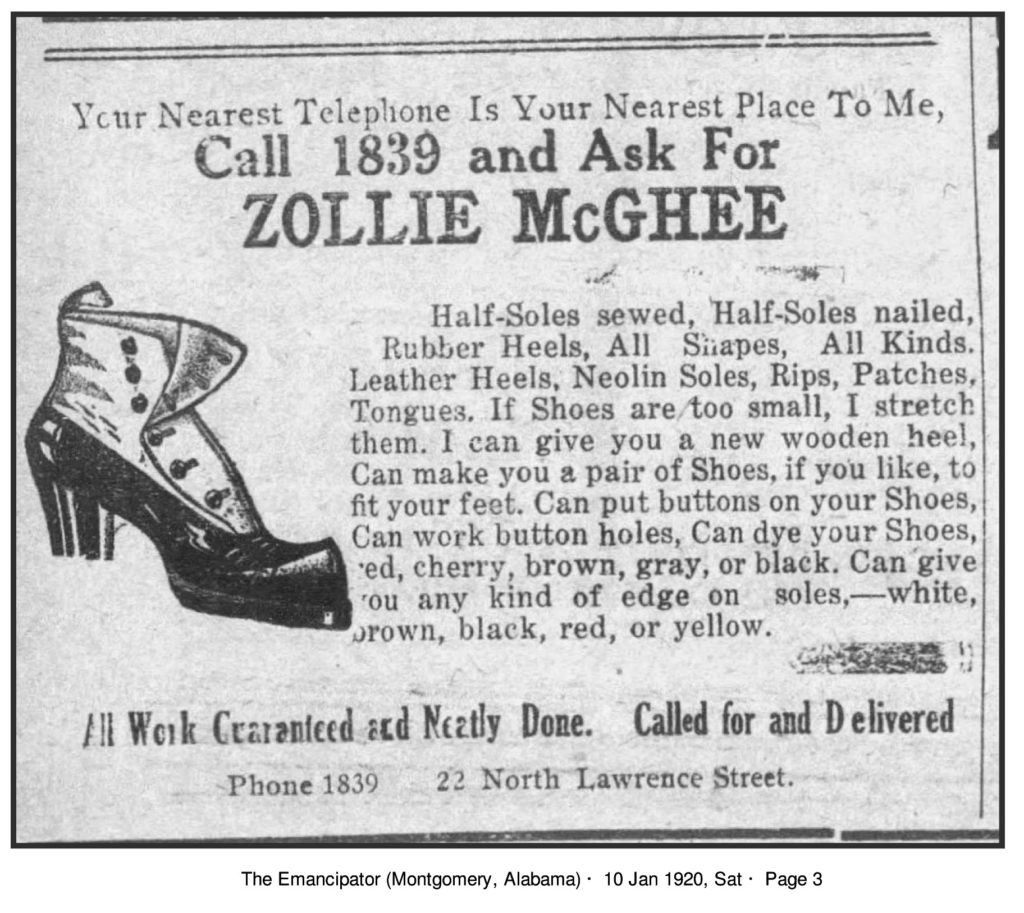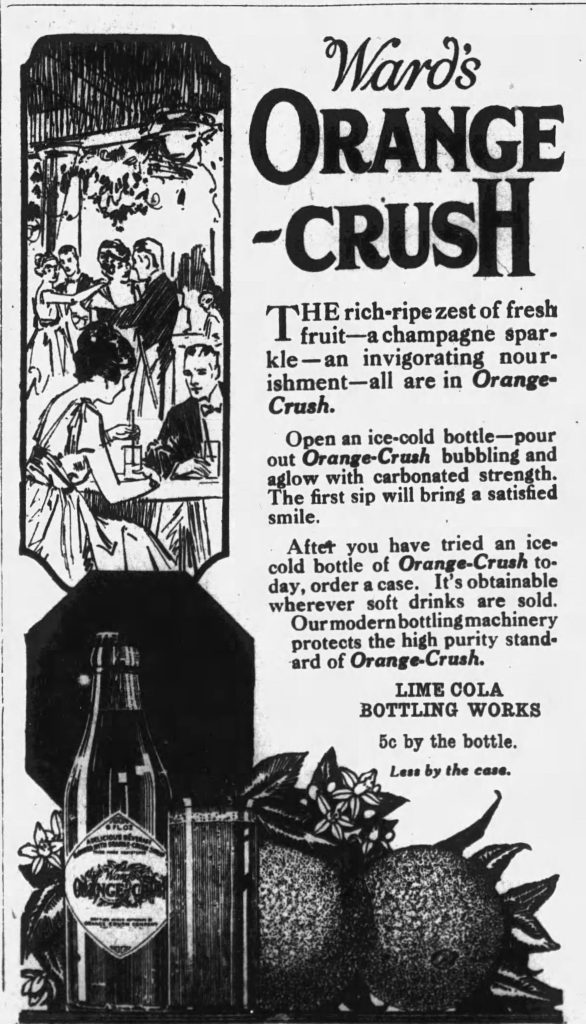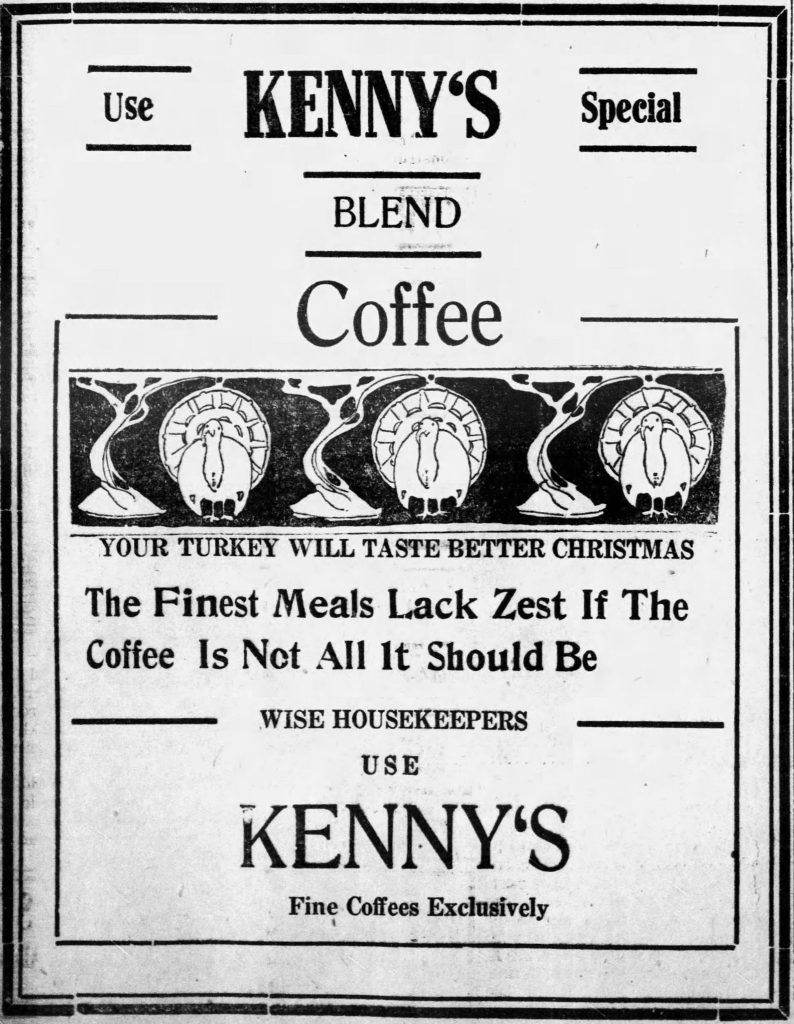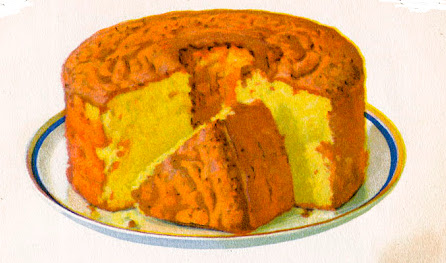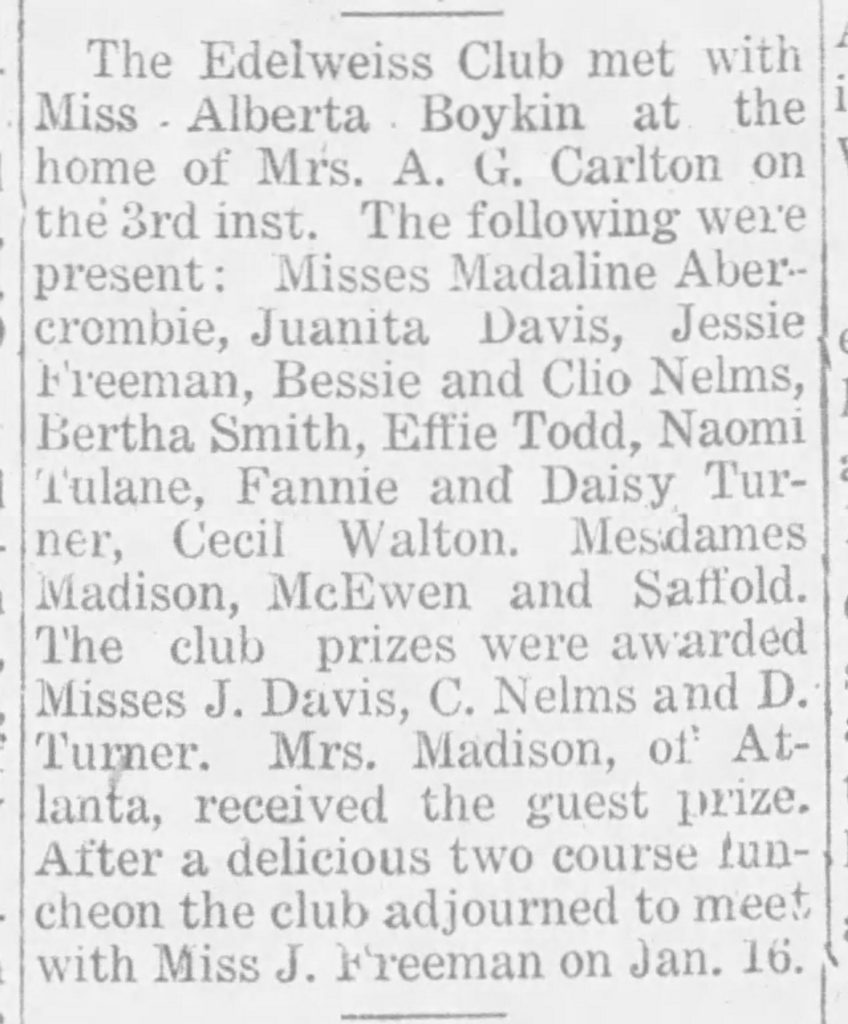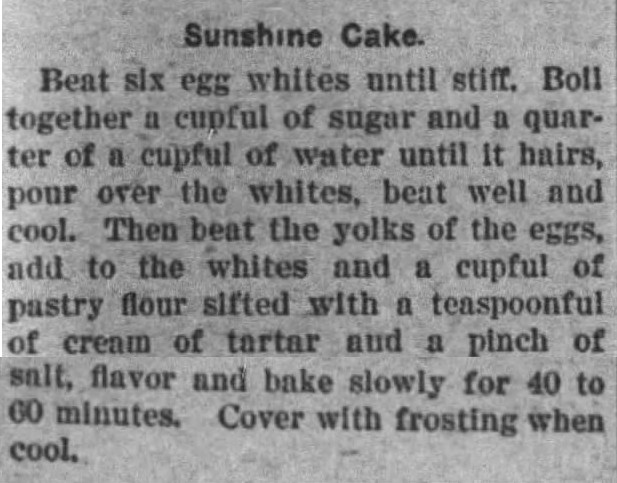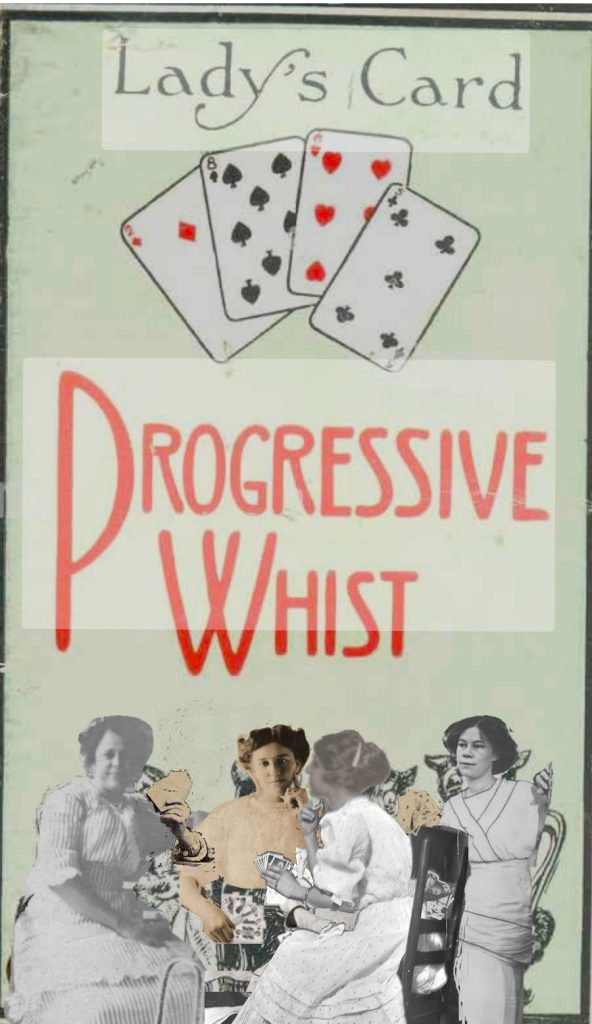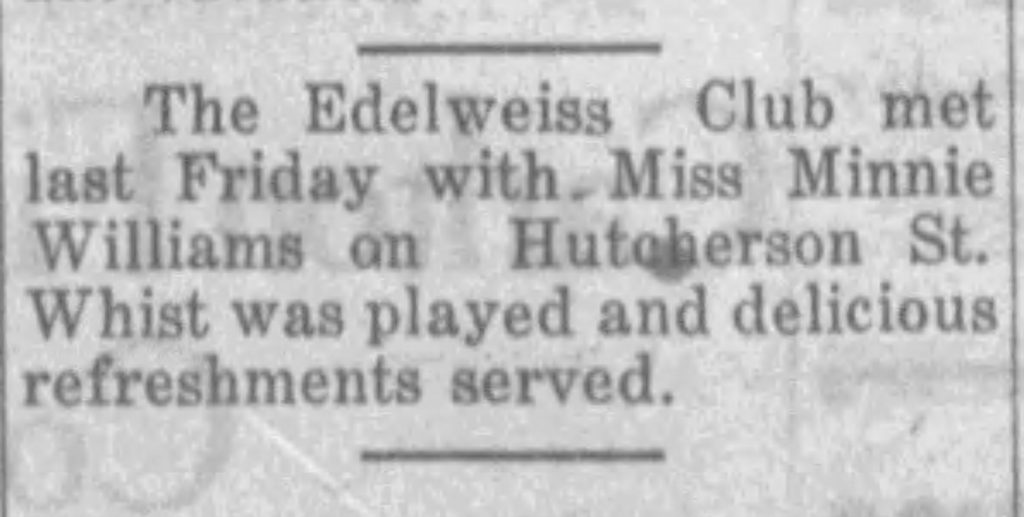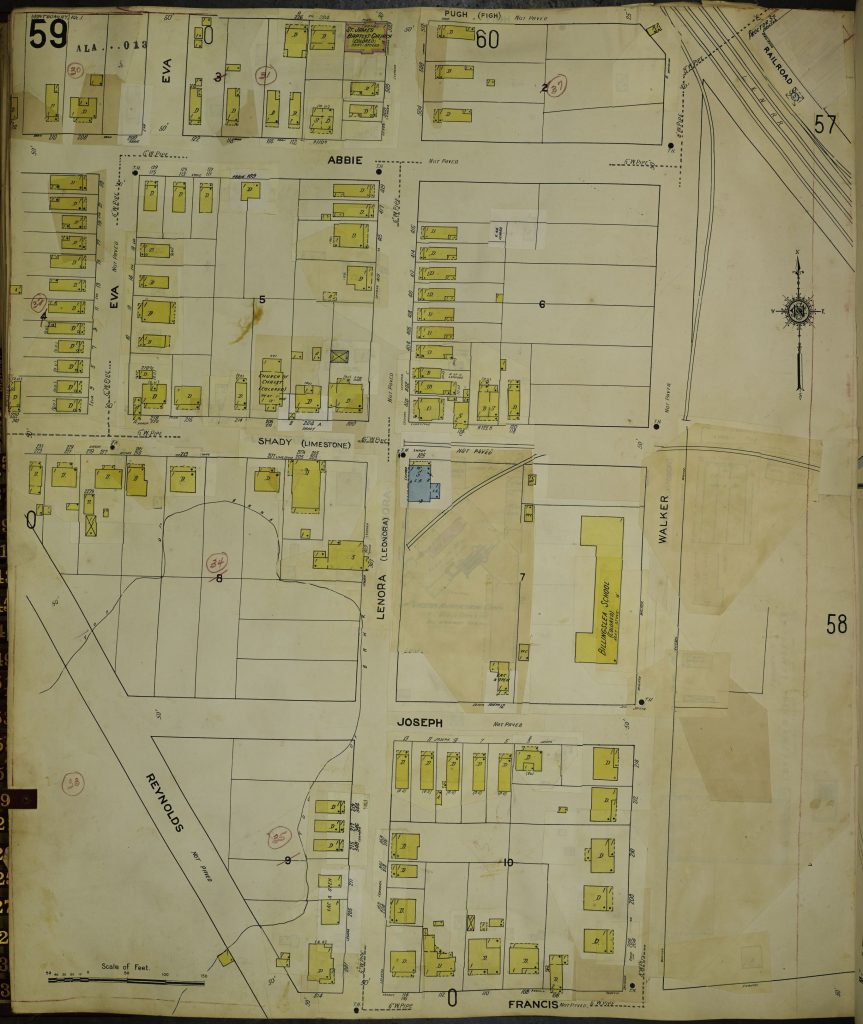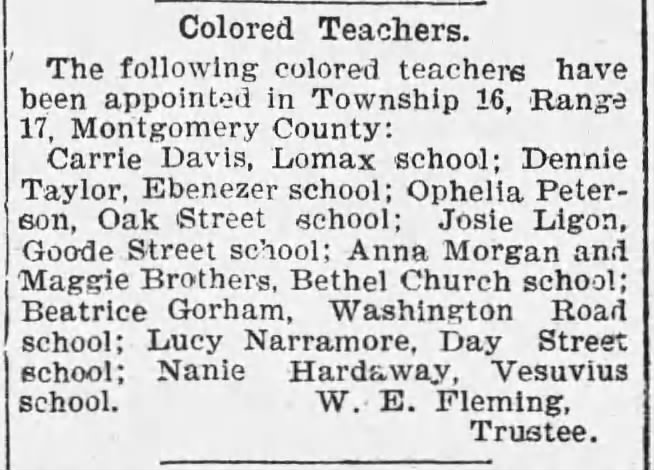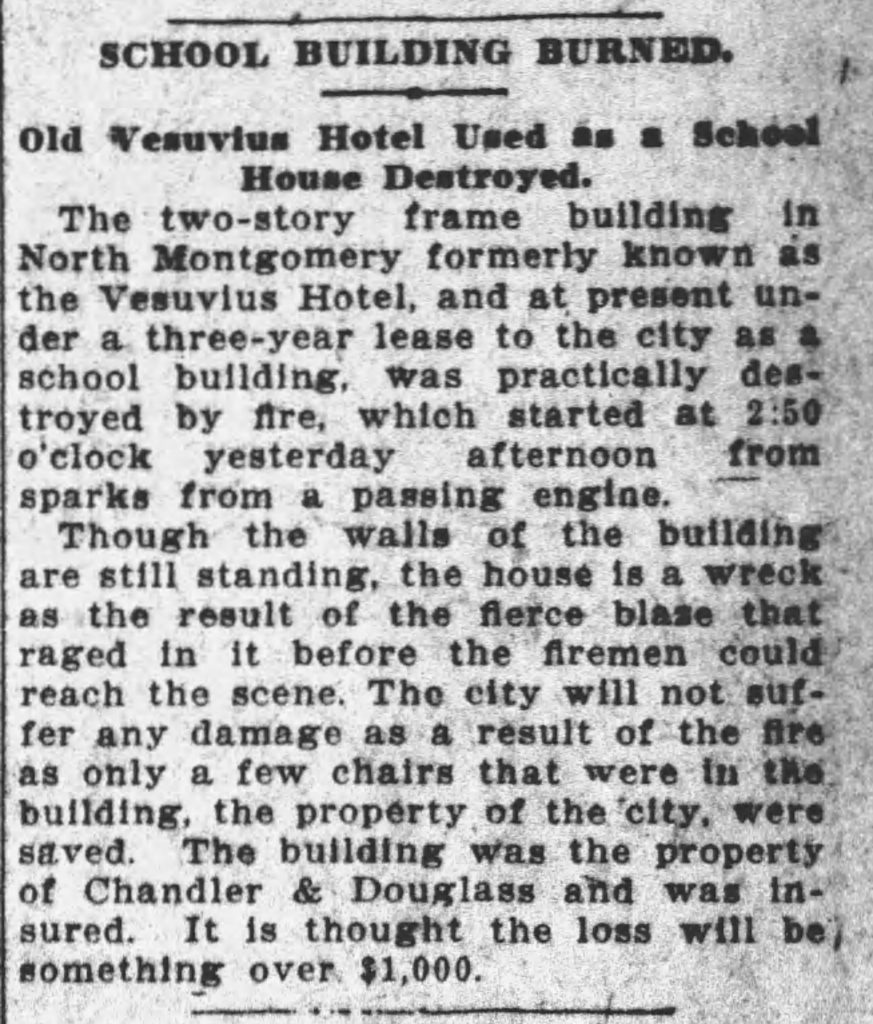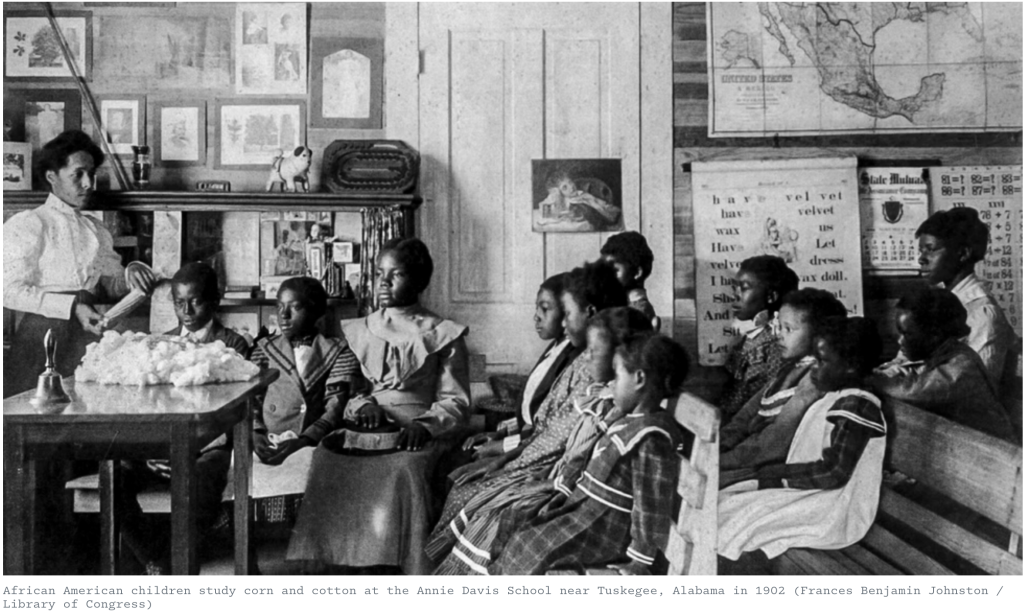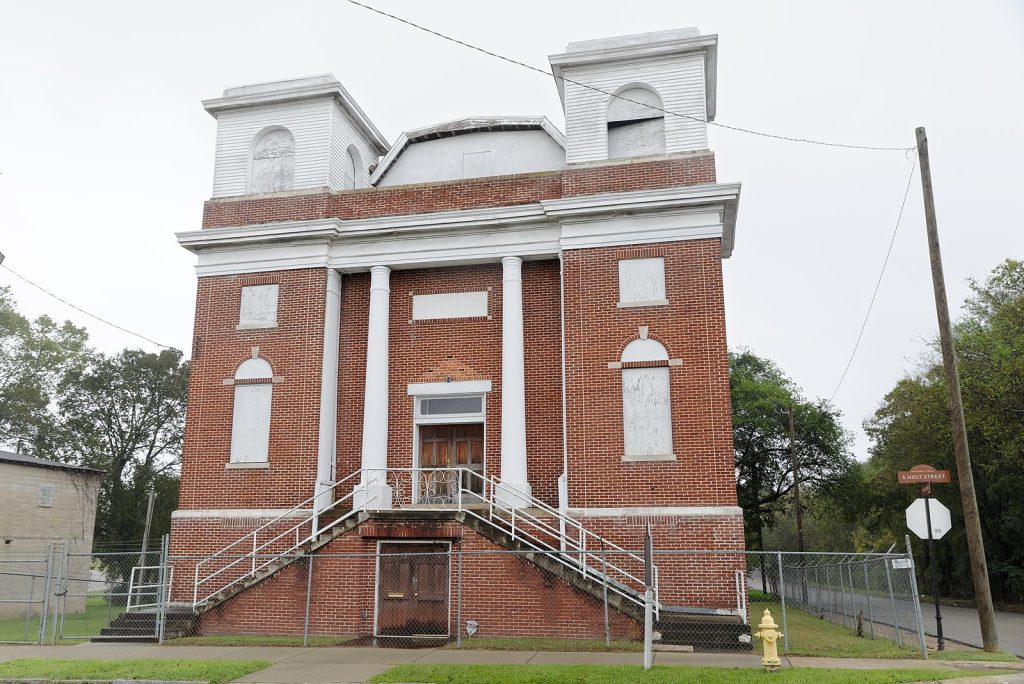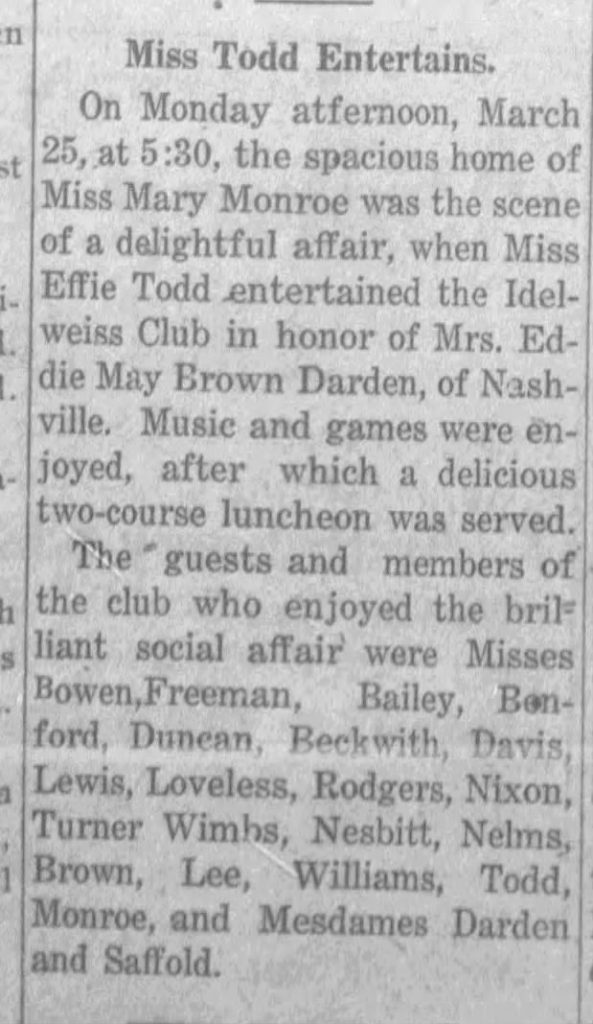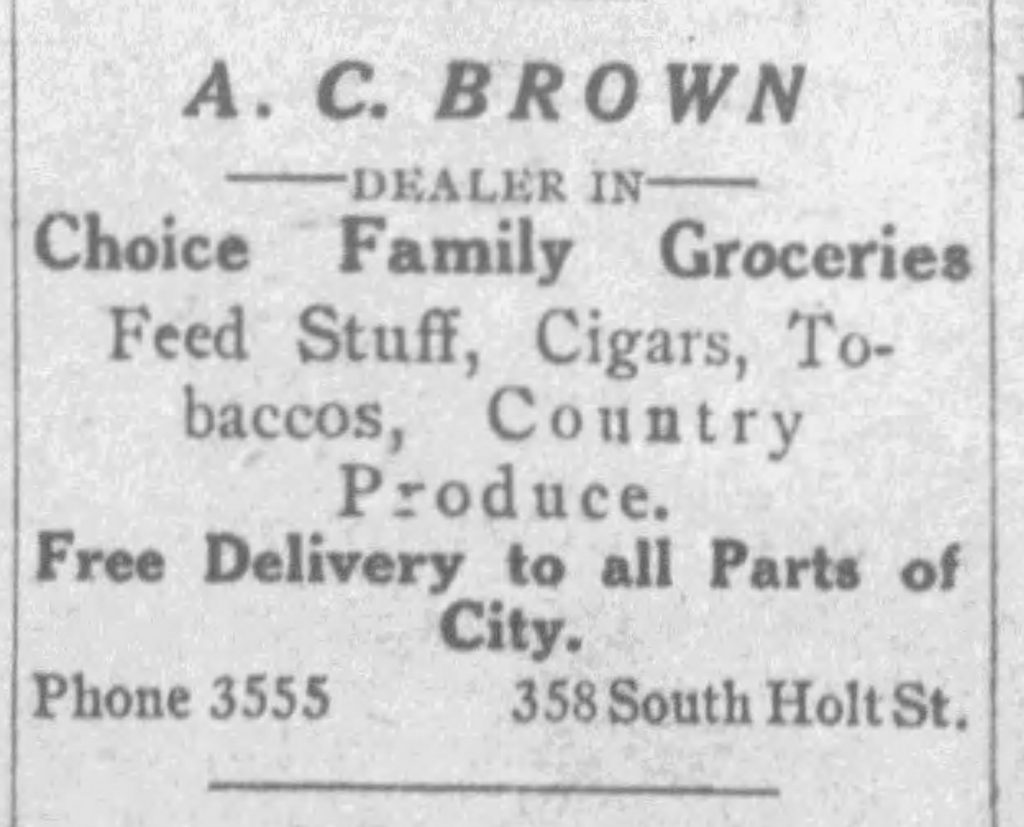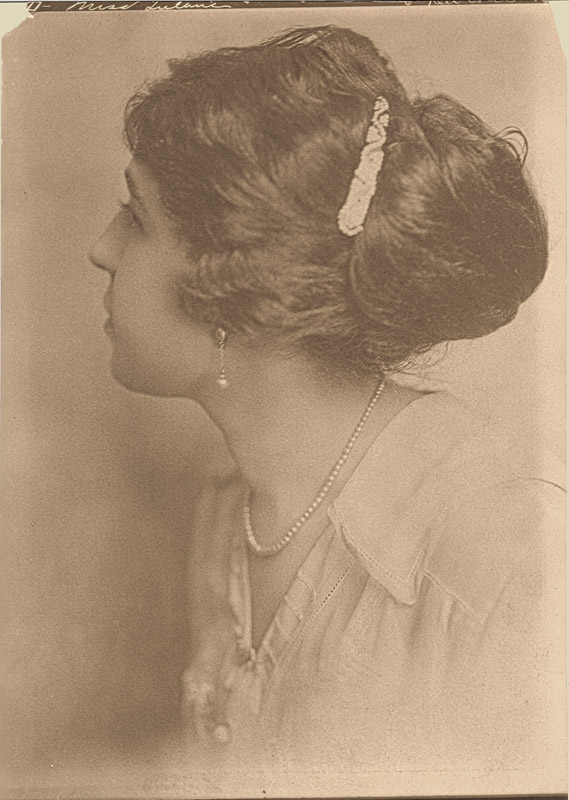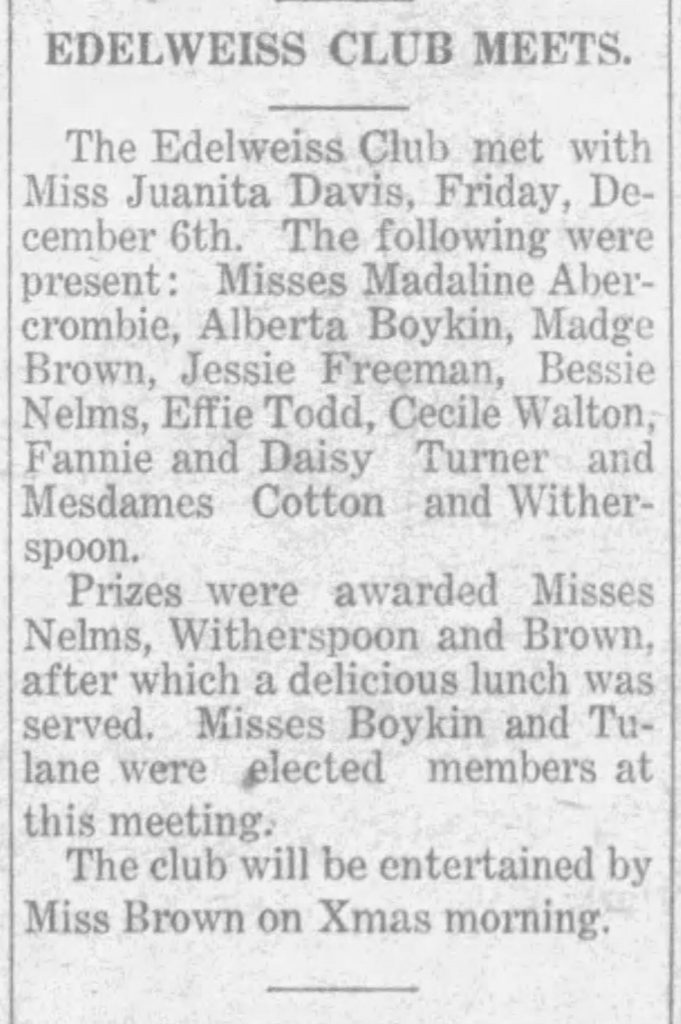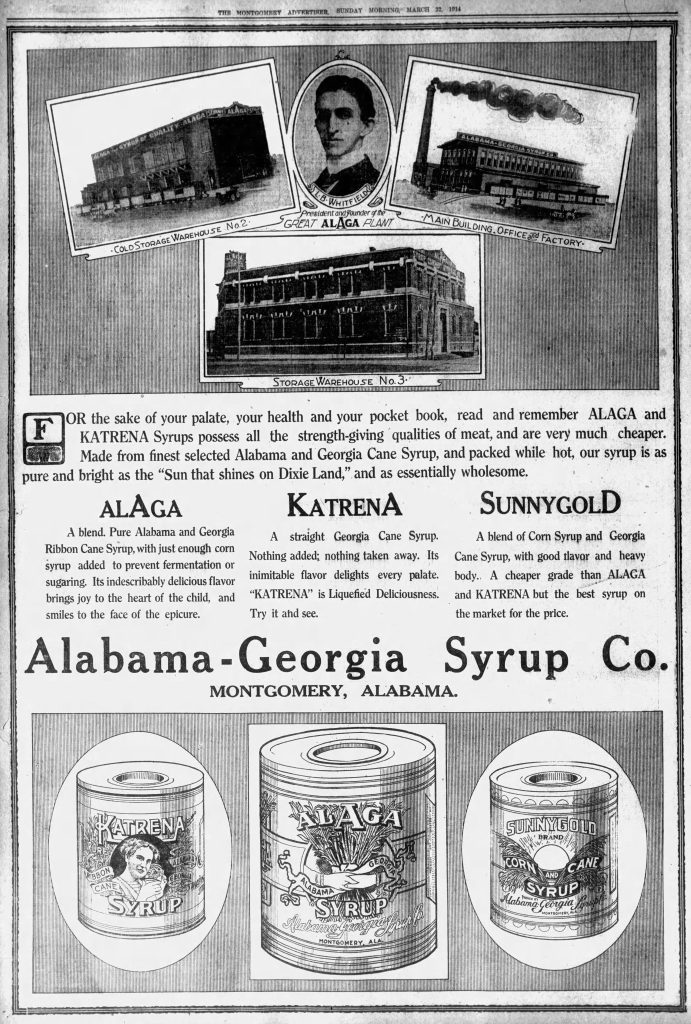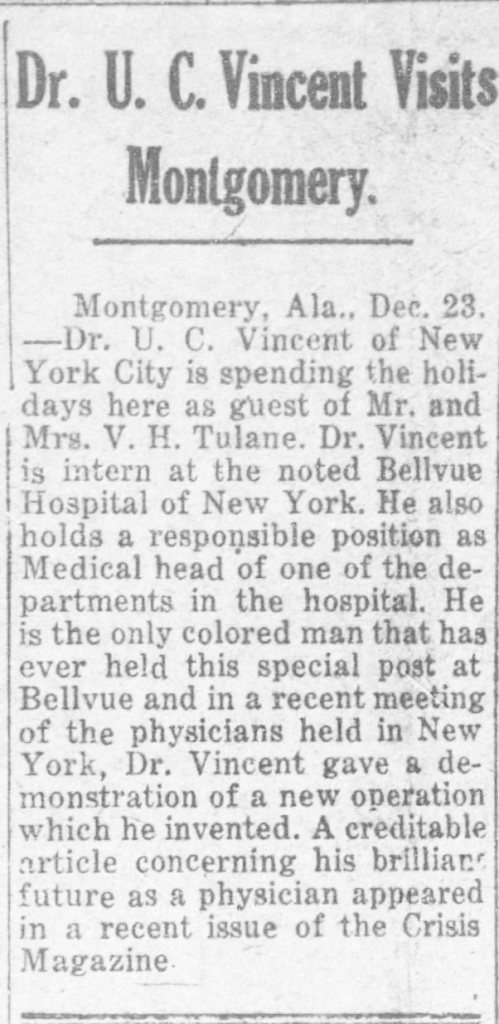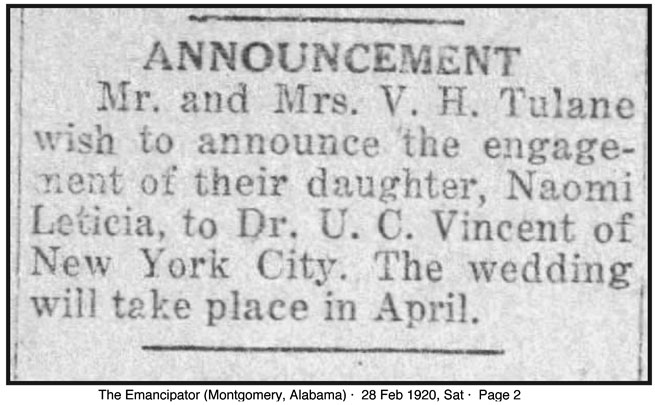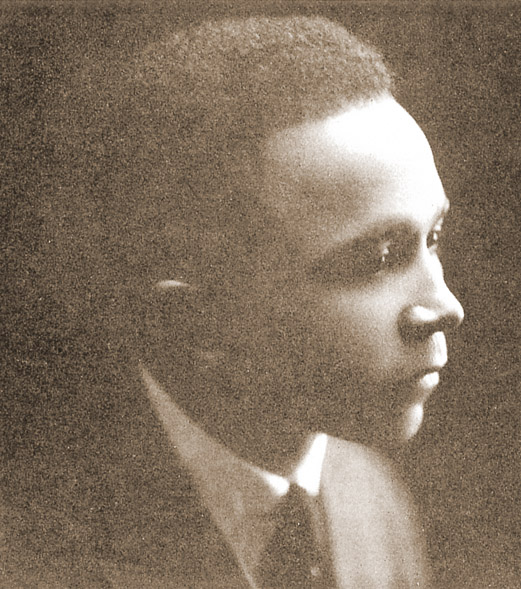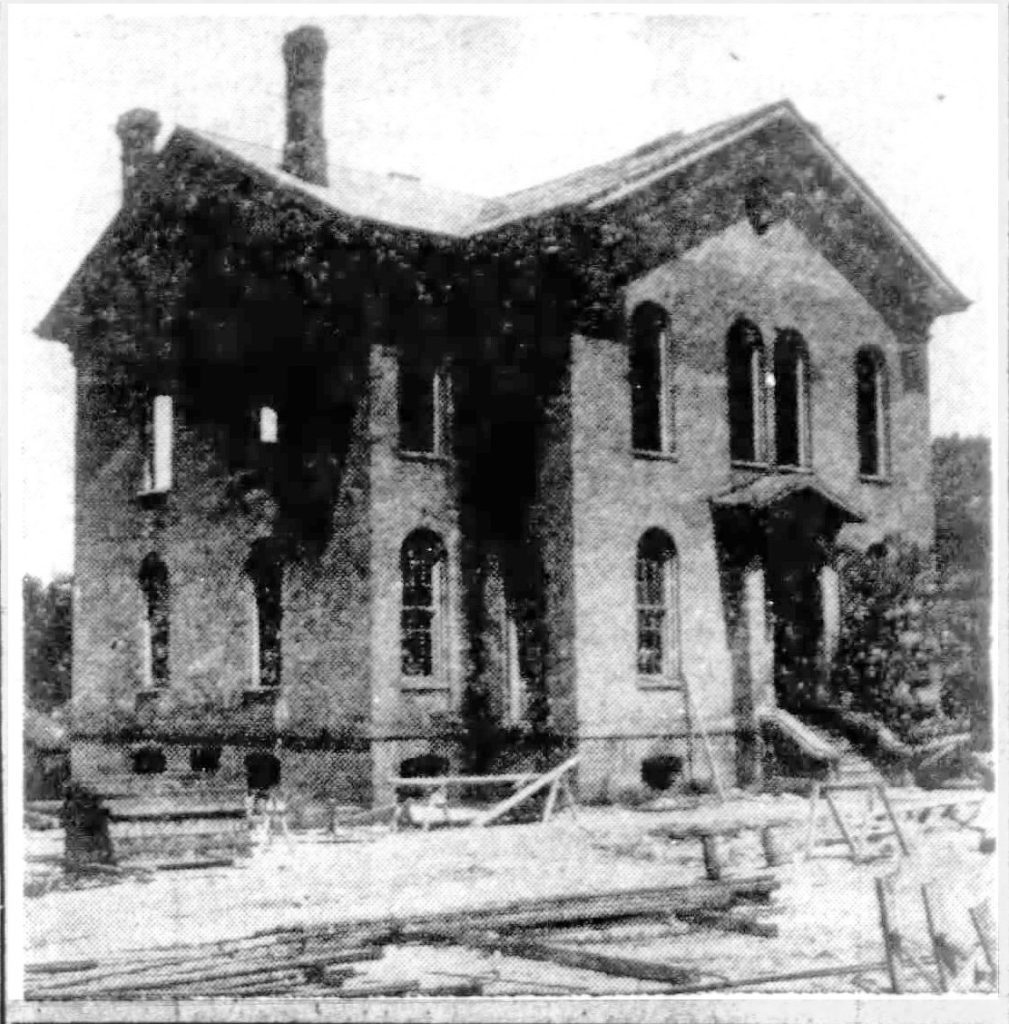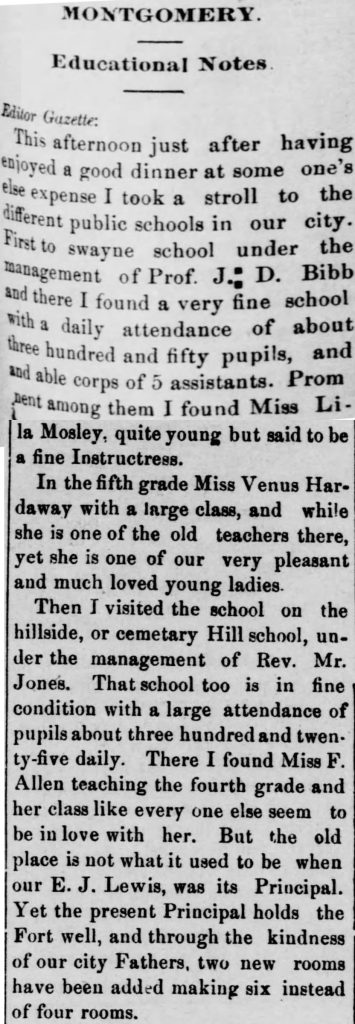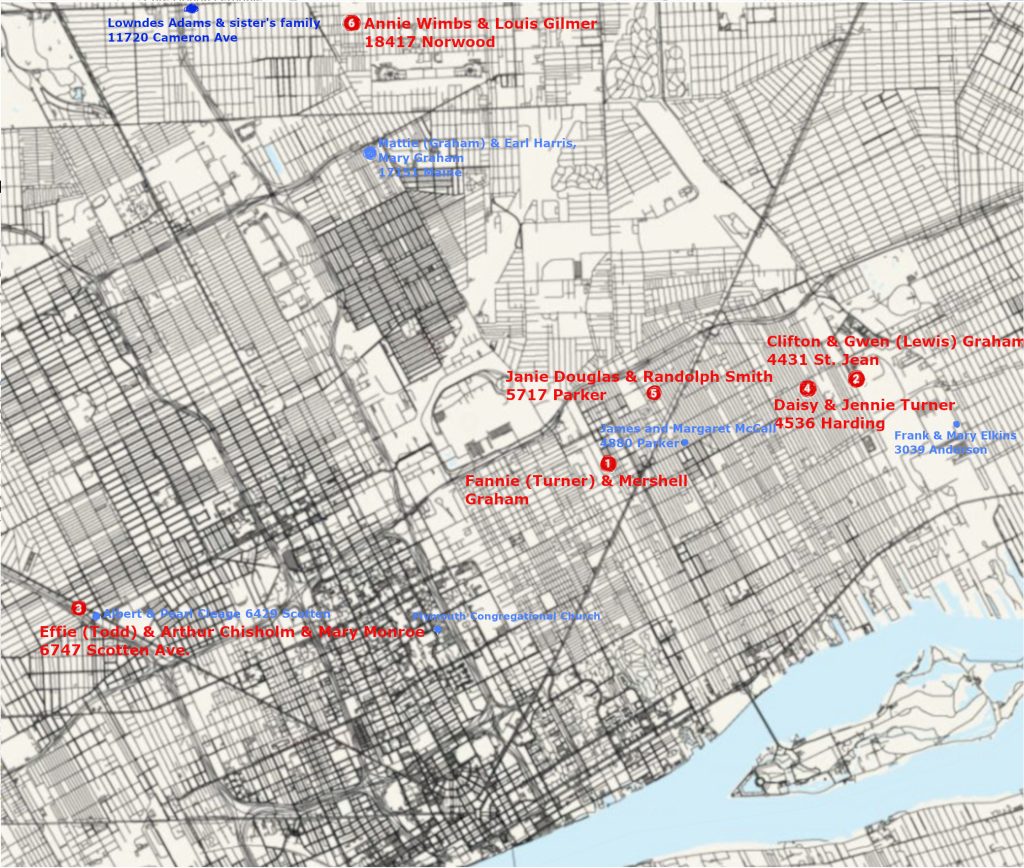
Some have wondered if the women associated with the Edelweiss Club who left Montgomery and moved to Detroit kept in touch with each other. Of course without interviewing them, I can only assemble the clues I have found and say that at least some did. There were other of their friends who moved from Montgomery to Detroit that they kept in touch with.
In Montgomery they lived within walking distance of each other. In Detroit they were much more spread out. My grandparents didn’t have a car until 1934. Before that, they caught buses or streetcars to travel outside of their neighborhood. In my grandparent’s lives, their church, Plymouth Congregational provided the groups to which they belonged to after moving to Detroit. Gwendolyn and Lewis Graham were also members.

Gabriella Snow married James Henry Kelly on 8 July 1917 in Montgomery. Although she was not a member of the Edelweiss Club, two of her younger sisters were. The Kellys moved to Detroit shortly after their marriage. They lived at 185 Rowena St. He worked as a machinist at an American Car and Foundry Company on Russell Street and died in Detroit in November of 1918. Gabriella Kelly returned to Montgomery and went back to teaching. She never remarried and had no children. She was buried from Old Church AME Zion Church in Montgomery.
Fannie Turner married Mershell C. Graham on 15 June 1919 in Montgomery. They moved to Detroit later the same day. At first they boarded with friends from home at 1031 St. Jean Ave. Mershell worked as a machinest at an auto plant. Fannie didn’t work outside of the home after their marriage. They had four children and were members of Plymouth Congregational Church.
In 1930 they owned their home worth $8,000 at 6638 Theodore, Detroit. Mershell was working at Ford’s Auto plant as a stock keeper. Oldest son Mershell died in 1927. They had three children at home; ten year old Mary V. , seven year old Doris and one year old Howard.

Gwendolyn Lewis married Clifton Graham in Montgomery. He left for the army and Gwendolyn remained in Montgomery where their first child was born. By 1919 they were in Detroit and members of Plymouth Congregational Church. Their second child was born in 1920.
In 1930, the Grahams owned their own home worth $9,000 at 4431 St Jean Avenue. He was working as a Prohibition officer for the United States government. Their two sons were Clifton age ten and Lewis age nine. Unfortunately that house is no longer there.
Clifton’s older sister, Mattie and his mother Mary were in Detroit by the early 1920s.
Effie Todd married Arthur Robert Chisholm in Montgomery on 9 August, 1919 after he left the army. By the 1920 census they were in Detroit. They rented a house at 832 Roosevelt Street. He was worked as a laborer at the Packard Motor Company. Effie was not working outside of the home, but they had five borders, including Janie Douglas Binford, also a former Edelweiss member. She was working at the post office.
In 1930 they owned their home worth $14,000, at 6747 Scotten Avenue. Effie was teaching. Mary Monroe was boarding with them and also teaching. Arthur was a driving for a cab company. They had no children, but raised Effie’s niece, Cosette.She was seventeen when she died of tuberculosis in 1929.
They later divorced. He remarried. Effie did not. She continued teaching until she died of pneumonia in 1939. She was buried from Hartford Avenue Baptist Church.
Janie White Douglas Binford had one child with her first husband, who she divorced. She later remarried, Alphonso Randolph Smith, on 21 Feb 1921 in Detroit. He was a postal worker. Died June 24, 1946. She attended St. Matthews Episcopal Church.
In 1930 they owned their home worth $9,000 at 5717 Parker Avenue. Unfortunately there is now a vacant lot there. Alphonso worked as a postal carrier. Janie worked as a postal clerk. There were two sons, John age nineteen and Paul age fifteen. Alphonso’s mother lived with them and didn’t work outside of the home. There were two lodgers.
Clara Robinson Baily. Married an older man. They separated and later divorced before she left Montgomery. They had no children. She was in Detroit by 1920 and lived at 449 E. Jefferson. She died in Detroit two years later in 1922. Her death certificate gave occupation as postal clerk and residence as 3130 Chestnut Street.
5. Daisy Turner never married. She and her mother and sister Alice moved to Detroit in 1922. They lived with sister Fannie and husband Mershell until they saved enough money to buy their own house. Mother Jennie was a seamstress at Annis furs. Younger sister Alice didn’t work outside of the home. Daisy was head porter at Annis Furs.. All attended Plymouth Congregational Church.
In 1930 they owned their home worth $7,000 at 4536 Harding on Detroit’s East side. They kept in touch with Mary Monroe over the years.

6. Annie Wimbs married Louis Gilmer on 24 Dec 1918 in Montgomery. They were married by Rev. Callahan of Dexter Ave. Baptist Church. They moved to Detroit by 1925. In 1927 they lived at 5304 24th Street. In 1930 lived at 18417 Norwood, in Conant Gardens, northeast Detroit. They had five children.
7. Mary Monroe never married. Moved Detroit. 1930 rooming with Effie and husband at 6747 Scotten Ave., Detroit West Side. She was a teacher in the city schools. In 1950 her niece was working at a fur store. Did Daisy help her get the job? She remained in the house on Scotten after Effie’s divorce and death.
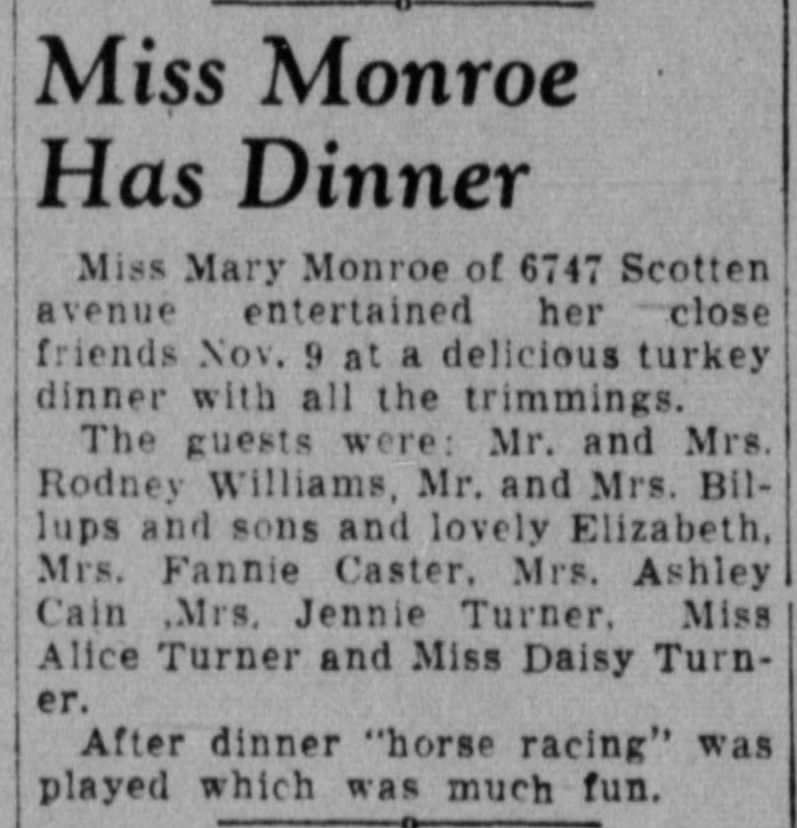
Daisy and Alice Turner and their mother Jennie have dinner with Mary Monroe.
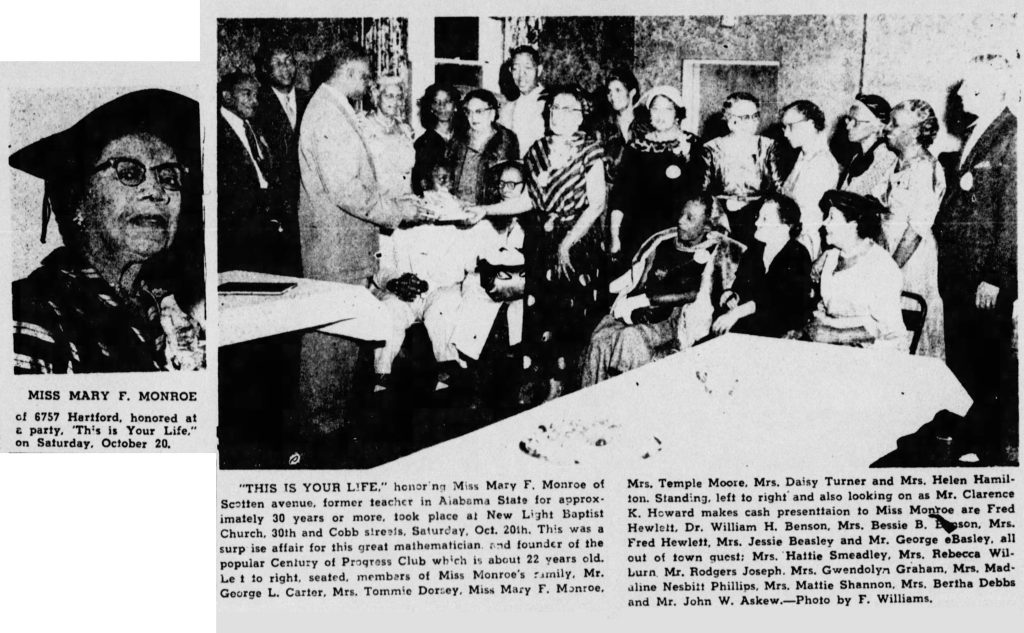
“THIS IS YOUR LIFE,” honoring Miss Mary F. Monroe of Scotten avenue, former teacher in Alabama State for approximately 30 years of more, took place at New Light Baptist Church, 30th and Cobb streets, Saturday, Oct. 10th. This was a surprise affair for this great mathematician and founder of the popular Century of Progress Club which is about 22 years old. Left to right, seated, members of Miss Monroe’s family, Mr. George L. Carter, Mrs Tommie Dorsey, Miss Mary Monroe, Miss Temple Moore, Miss Daisy Turner and Mrs Helen Hamilton. Standing, left to right and also looking on as Mr. Clarence K. Howard makes cash presentation to Miss Monroe are Fred Hewlett, Dr. William H. Benson, Mrs. Bessie B. Benson, Mrs. Fred Hewlett, Mrs. Jessie Beasley and Mr. George Beasley, all out of town guests; Mrs. Gwendolyn Graham, Mrs. Madaline Nesbitt Phillips, Mrs. Mattie Shannon, Mrs. Bertha Debbs and Mr. John W. Askew. – Photo by F. Williams.
